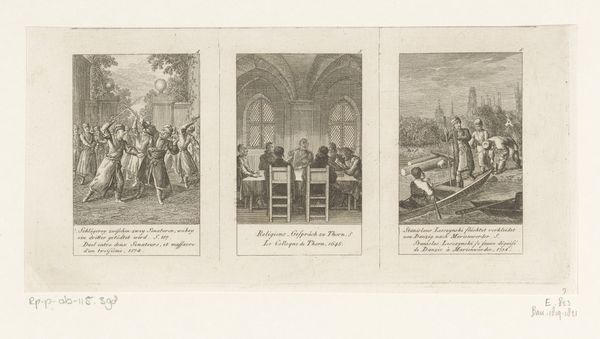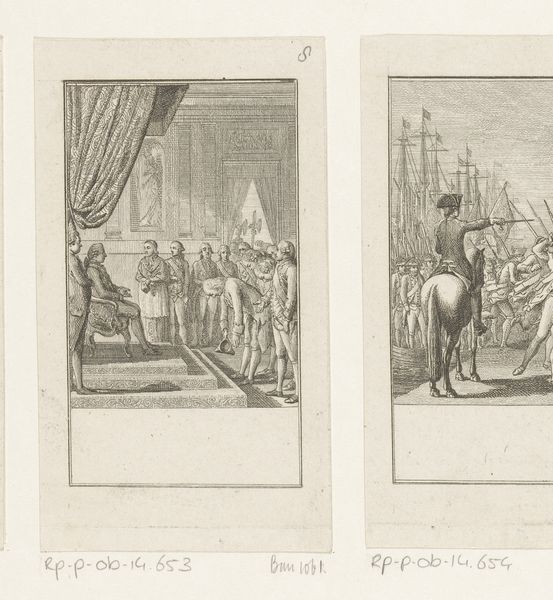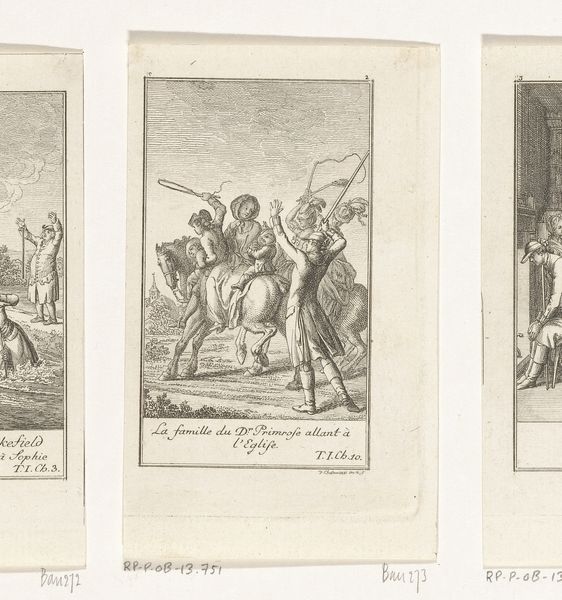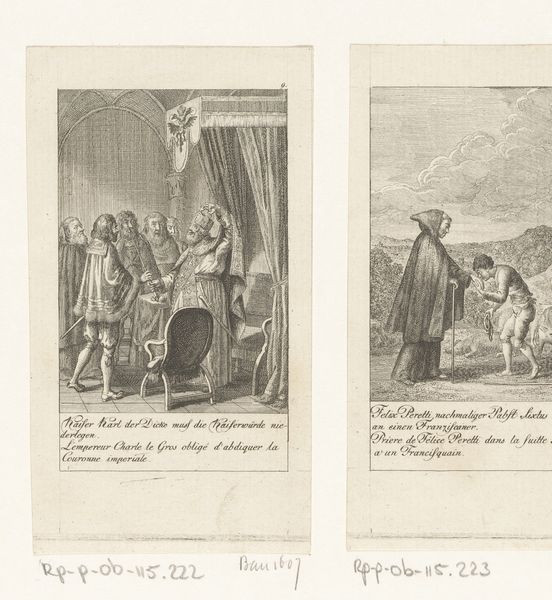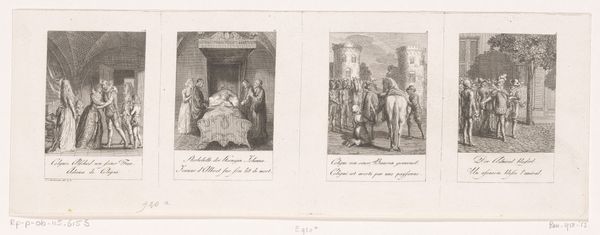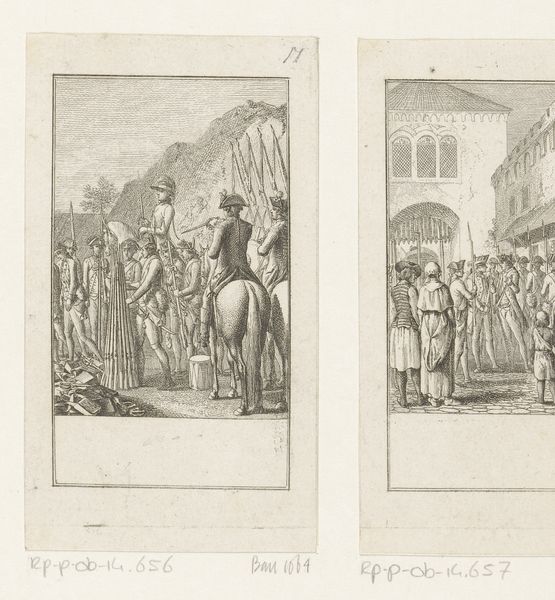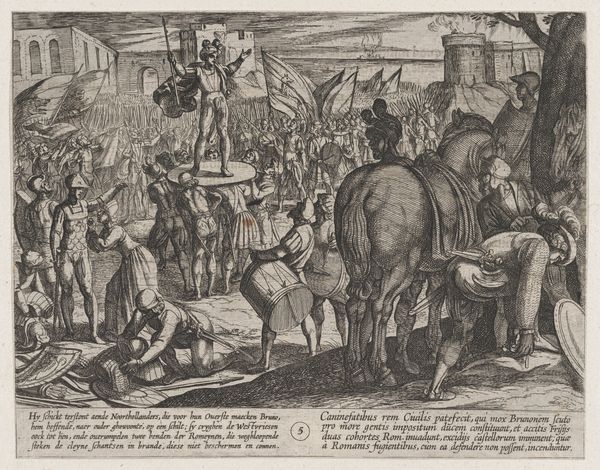
print, engraving
#
neoclacissism
#
narrative-art
# print
#
history-painting
#
academic-art
#
engraving
Copyright: National Gallery of Art: CC0 1.0
Curator: The crisp, almost journalistic quality of this engraving, created between 1783 and 1784 by Daniel Nikolaus Chodowiecki, immediately grabs you. What’s your first impression, from a historian’s perspective? Editor: There's a stark formality here, a sense of the stage being carefully set. Despite the relatively small size of this print, it portrays historical events that resonate even now. What is being depicted? Curator: The diptych presents two pivotal moments during the American Revolution. The panel on the left commemorates the surrender of General Burgoyne at Saratoga, October 16th, 1777, a crucial turning point. The panel on the right depicts Benjamin Franklin's audience with the French court at Versailles on March 20th, 1778, where he was officially received as the ambassador of the newly formed United States. Editor: The symbolic weight of each image is fascinating. Saratoga, with the defeated troops bowing their heads, becomes emblematic of a nascent nation’s military triumph. Versailles suggests the importance of international recognition. Both frame the story as one of legitimation, wouldn’t you agree? Curator: Absolutely, but with some caveats. Burgoyne’s surrender underscores American agency, resilience, and tactical genius. The Versailles scene showcases Franklin embodying enlightenment ideals and savvy diplomacy, presenting a civil face to a burgeoning nation hoping to supplant empires. Editor: The engraving style itself, with its sharp lines and relatively simple composition, speaks to a moment of optimism, yet there’s also a kind of clinical distance. There isn’t overt romanticism in this history telling. It's a cool-headed record presented to a contemporary audience that might be skeptical of, or threatened by, a new republic. Curator: Agreed. Chodowiecki was making an argument about power, not just illustrating events. These events, now set in stone through a print like this, become symbols in the collective memory—anchors of national identity, continuously reinterpreted. This little diptych serves as evidence that symbols are most effective when they emerge directly from the socio-political world that informs the people. Editor: It’s amazing how an object created to commemorate can also simultaneously influence perceptions for decades. This print, documenting key diplomatic events, suggests the long arm of the archive, constantly shaping public thought.
Comments
No comments
Be the first to comment and join the conversation on the ultimate creative platform.

